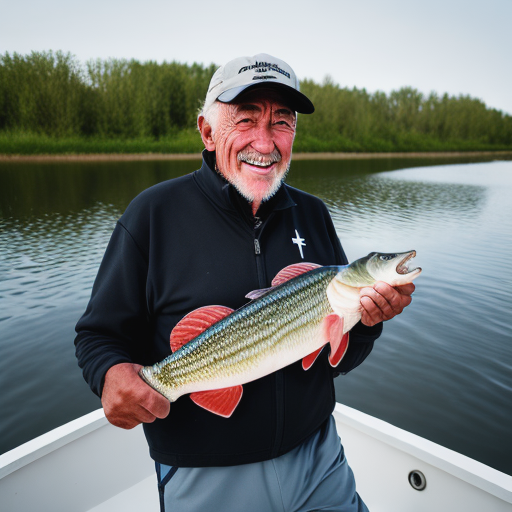Spey casting is a top pick for fishing steelhead. Learning it well can make a big difference in your success. It’s crucial to stick to the basics and build from there. By mastering line control, the mechanics of casting, and how to present your fly correctly, you’ll enjoy fishing for steelhead even more. In this piece, we’ll go over some essential Spey casting techniques to help you catch more steelhead.
Key Takeaways:
- Mastering Spey casting can greatly increase your chances of catching steelhead.
- Focus on the fundamentals of line control and proper fly presentation.
- Developing your casting skills is crucial for successful steelhead fishing.
- Choosing the right equipment, including Spey rods, is essential for effective casting.
- Pay attention to water conditions, steelhead behavior, and adapt your fishing strategies accordingly.
The Importance of Casting Skills
Casting skills are key in steelhead fishing success. Even with not-perfect casts, you can still catch fish. But, improving your technique will boost your steelhead hooking chances. As a new or skilled angler, learning advanced Spey casting like the double Spey and snap T is valuable. It helps in presenting your fly well and accurately. For starters, it’s important to learn basic casts like the single Spey and Perry poke first.
Picking the right steelhead flies also matters. Choose flies that look like what the fish naturally eat. This makes it more likely for them to bite. Trying different flies, like intruders and leeches, helps you find what works best. It improves your fishing game by matching the river’s conditions and the fish’s tastes.
Choosing the Right Equipment
Having the right gear is key for successful Spey casting when fishing for steelhead. Think about the rod’s weight, length, and action to match your style and area. A rod between 13 to 15 feet with a medium-fast to fast action works best. It provides the right leverage and control.
Good Spey rods for steelhead are designed for these fishing needs. Some great choices are:
1. Brand A Model X:
This rod is powerful yet delicate, perfect for easy casting and controlling the line. It’s light and lively, great for long fishing trips.
2. Brand B Model Y:
This model is tough and durable, able to take on steelhead’s strong fights. It has a sensitive tip for gentle presentations and a strong backbone to handle big fish.
3. Brand C Model Z:
For steelhead anglers, this rod is a top pick. It provides great line control and accuracy. It suits various casting styles and fishing spots, good for any angler’s level.
Choosing the right Spey line, reel, and accessories improves your casting. A quality Spey line with the right weight and taper is crucial. It works well with your rod and helps you cast smoothly.
A well-matched reel with a strong drag is important to face the strong steelhead. Don’t forget essential accessories like backing, leaders, and flies made for steelhead fishing. These complete your gear.
Thinking about your rod’s weight, length, and action is important. Match them with the right line and accessories. This combo boosts your casting skills and your chances of catching steelhead.
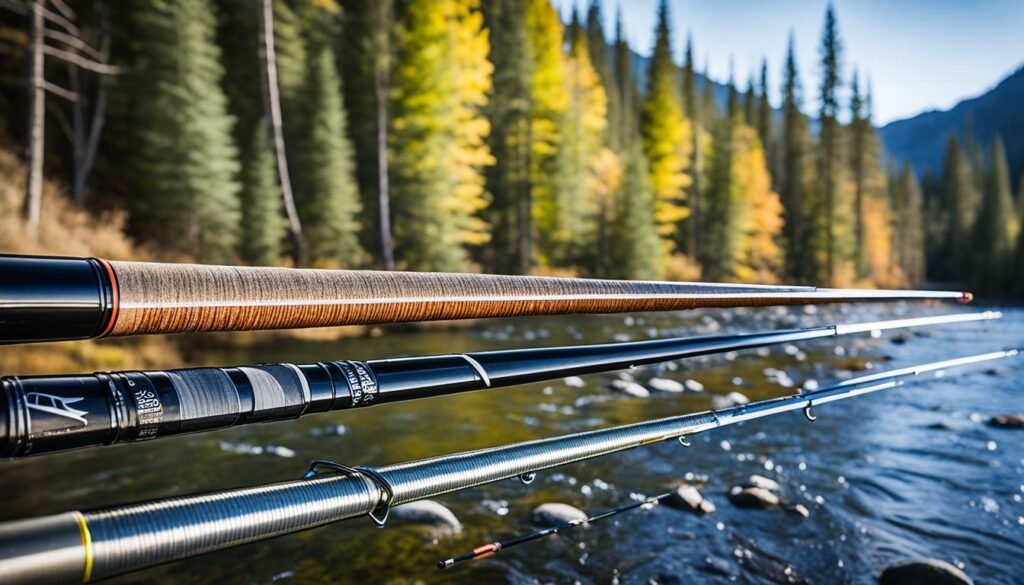
Mastering Line Control
For Spey casting when fishing for steelhead, line control is key. Being able to mend your line well and move your fly correctly can really help. It makes your fly look more natural to the steelhead. Learning and using different techniques for line control can improve your chances of catching them.
The Downstream Mend
The downstream mend is very effective. First, gently lift your rod tip upstream. Then, make a smooth gentle cast downstream. This action removes any drag from your fly, making it move naturally. It looks more appetizing to steelhead.
The Upstream Mend
Trying the upstream mend technique is also helpful. Lift your rod tip a bit downstream. Then, pull your line upstream fast. This can slow down your fly in the water. It works well in fast currents or when the steelhead are near the surface.
The Stack Mend
The stack mend is good for deep or slow water. Raise your rod tip a little. Then, do a few mends in a row, stacking the line. This move keeps your fly in the water longer. It increases your chances of attracting a steelhead.
“Mastering line control is critical for Spey casting and catching steelhead. Techniques like the downstream mend, upstream mend, and stack mend are key. They help change the way your fly moves, making it more likely to get a strike.” -John Anderson, Steelhead Fishing Expert
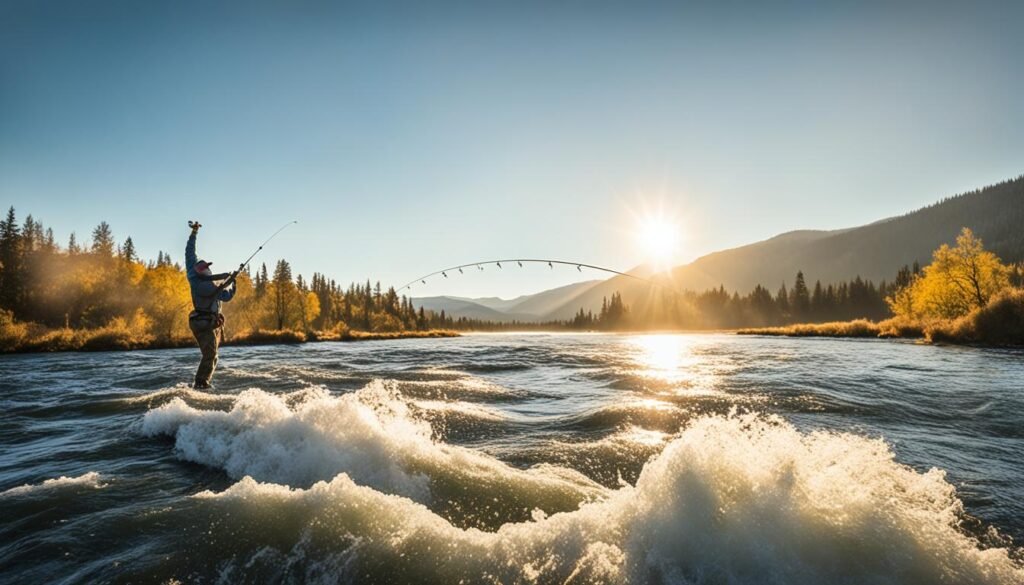
Don’t forget, getting good at line control requires practice. It’s about trying new techniques and adjusting to what the water and fish are doing. With enough focus on this, you’ll see your steelhead fishing skills grow.
Perfecting the Swing
The swing is crucial in Spey casting for steelhead. You can lure these tricky fish by moving your fly just right. Knowing the best speed, depth, and angle is very important. Trying out various steelhead fly patterns helps too. It can really catch their eye.
Manipulating the Swing
Perfecting your swing means adapting to where you are. Think about the water and how the steelhead act there. This boosts your chances of a catch.
Remember, a slow and steady swing can often entice steelhead to strike. Try to maintain steady tension in your line to give the illusion of a live, natural prey.
Exploring Different Fly Patterns
Trying out different steelhead fly patterns can be rewarding. Use intruders, leeches, or classic steelhead flies for better chances.
There’s a list of great steelhead fly patterns:
- Intruders
- Leeches
- Traditional steelhead flies
Each pattern offers something special for the water. Steelhead often have their favorites. By changing your fly and watching the fish, you figure out what works best near you.
Visualizing Success
Imagining a successful fly presentation can aid your concentration. See the fly move like prey in your mind. This helps you cast precisely.
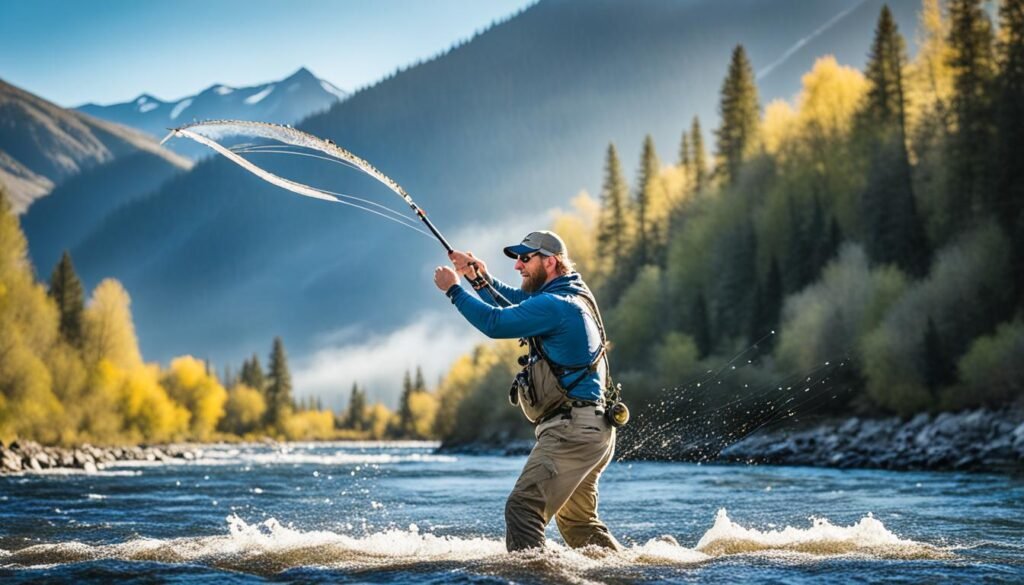
| Fly Pattern | Description |
|---|---|
| Intruders | A large, attention-grabbing fly pattern with vibrant colors and flowing materials. |
| Leeches | A simple and versatile pattern that imitates a leech, often tied with marabou and a flowing tail. |
| Traditional steelhead flies | Classic patterns such as the Green Butt Skunk or the Purple Peril, which have stood the test of time. |
Experimenting with flies and bettering your swing opens doors for more steelhead catches. It’s all about the technique.
Reading the Water
When fishing for steelhead using Spey casting, knowing the water is key. It’s all about finding the right spots in the river. This means looking for certain structures, how the water moves, and where the fish might be.
“Reading the water is like deciphering a secret code that unlocks the hidden pathways to steelhead.”
Finding where steelhead like to hide is a big part of fishing. They often stay in places with slow water and lots of structure. Places with boulders, logs, and deep water are good examples. This is where they wait for food to come by.
The way the water moves also matters. Noticing the speed and depth of the water helps. You also want to spot any places where the water’s movement changes, like seams or small breaks. These spots are where fish like to feed.
It’s good to check out rivers well-known for steelhead and Spey fishing. Here are some of the best rivers for that:
- Rogue River, Oregon
- Deschutes River, Oregon
- Skeena River, British Columbia
- Smith River, California
- St. Marys River, Michigan
Top Steelhead Rivers for Spey Casting
| River | Location |
|---|---|
| Rogue River | Oregon |
| Deschutes River | Oregon |
| Skeena River | British Columbia |
| Smith River | California |
| St. Marys River | Michigan |
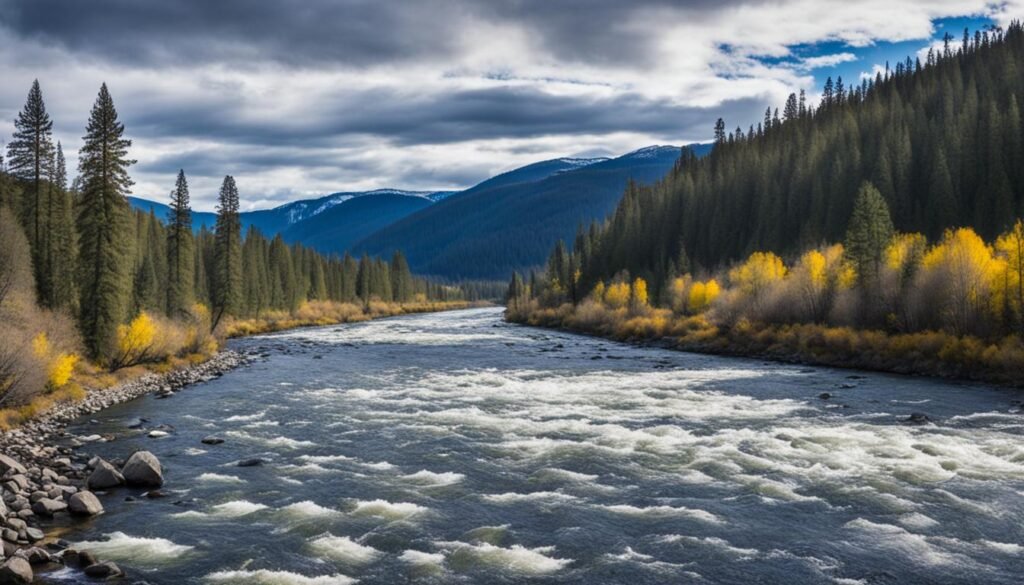
Fine-Tuning Your Presentation
When trying to catch steelhead, adjusting your presentation is key. It’s the small things that count when you’re aiming to attract them. Things like how fast your fly moves, its depth, and even how you manage your fly line can really draw steelhead in.
Adapting your skills to different situations is also crucial. Because steelhead can be quite picky, what catches their eye today might not tomorrow. Being flexible and trying new methods is important. This helps you figure out what works best to hook a steelhead.
Using advanced Spey casting methods can level up your game. Techniques such as the snake roll or the switch cast can improve how you control your line and where your fly lands. These are really useful when you’re fishing in tough spots, like strong currents or tight spaces.
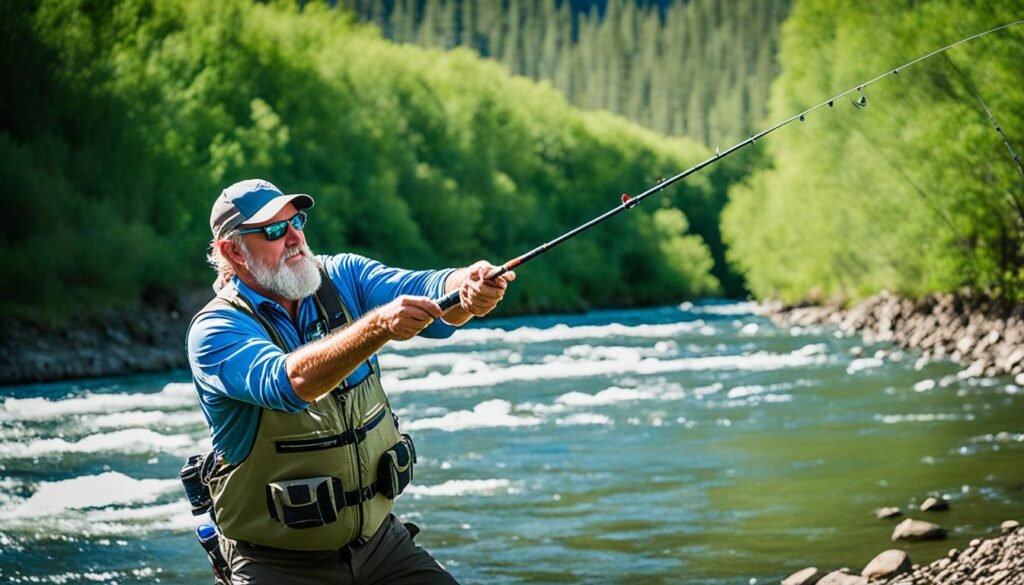
For serious anglers, the right Spey rods are a must. Quality gear made for steelhead fishing enhances your chances of success. A good Spey rod gives you the power and accuracy needed for advanced techniques. It’s a smart investment for those serious about their fishing.
Steelhead are very cautious, making attention to detail crucial. By fine-tuning your presentation and using advanced techniques, you can lure more of these elusive fish. Remember, it’s all about the details and having the right tools for the job.
Fishing Strategies and Tips
Improving your Spey casting for steelhead is all about the right strategies. Knowing where and when to fish, what each water type means, and steelhead habits can boost your success. This knowledge is key to becoming a better angler.
Knowing When and Where to Fish
For steelhead fishing, timing is crucial. Steelhead move from the ocean to rivers during fall and spring. Find the best time for fishing by looking up when the steelhead runs happen near you.
Knowing the best fishing spots is also important. Steelhead like deep pools, runs, and fast water areas. Things like rocks, logs, and banks provide good hiding spots for them.
Approaching Different Water Conditions
Adapting to changing water is vital. In murky, high water, use big and bright fly patterns. Steelhead will be closer to the banks or in deep areas.
On the flip side, in low, clear water, steelhead are cautious. Use small, natural-looking flies to attract them. Move quietly and cast far to avoid scaring the fish.
Understanding Steelhead Behavior
Knowing how steelhead act can really help. They’re more active at dawn or dusk. So, fish during these times for better results.
Steelhead react to the weather and their surroundings. Keep an eye out for changes in temperature, insect activity, and current speed. Adjust your fishing approach based on what you notice.
Trying out different flies is a good tactic. Steelhead have their own tastes in fly patterns. Experiment to see what they like most.
Fishing for steelhead can be tough, so patience is key. Keep learning and trying new things. With time and effort, catching these spirited fish will become more likely.

Tips for Steelhead Fishing Success:
- Experiment with different steelhead fly patterns to determine what works best in your fishing area.
- Pay attention to environmental factors such as temperature, insect hatches, and water flows to adjust your fishing strategy accordingly.
- Fish during low-light periods, such as early morning or late evening, when steelhead are more active.
- Vary your fishing techniques, including different casting styles, retrieves, and presentations.
- Practice proper catch and release techniques to help preserve and sustain steelhead populations.
Conclusion
Learning to Spey cast for steelhead takes time and effort. It’s about the basic moves and getting better bit by bit. Your gear and how you present your bait are super important too.
Stay sharp by watching the water and changing your plan as needed. Try new things and keep an open mind. With love for the sport, anyone can get great at Spey casting. Then, it’s all about the excitement of hunting these amazing fish.
Good luck out there!
FAQ
What are some Spey casting techniques for steelhead?
For steelhead fishing, you’ll want to learn the double Spey and snap T. Also, try the single Spey and Perry poke.
How can I improve my Spey casting as a beginner?
To get better at Spey casting, start with the single Spey and Perry poke. Then, move on to more complex methods.
What are the best Spey rods for steelhead?
For steelhead, aim for Spey rods between 13-15 feet. These should have a medium-fast to fast action.
How can I master line control for Spey casting?
Line control mastery involves knowing how to mend downstream and upstream. Master the stack mend as well.
What is the swing phase in Spey casting for steelhead?
This phase involves controlling your fly’s speed, depth, and angle. You do this to attract steelhead while presenting your fly.
How can I read the water to improve my Spey casting for steelhead?
To improve your Spey casting, understand the river’s features and flow. This helps you place your fly where the steelhead are.
How can I fine-tune my presentation for steelhead?
To fine-tune your presentation, tweak your fly’s speed, depth, and drift. Manage your fly line well to make it better.
What are some effective fishing strategies for Spey casting for steelhead?
Good strategies include knowing the best times and spots to fish. Also, be ready to adapt to different river conditions and learn about steelhead habits.

